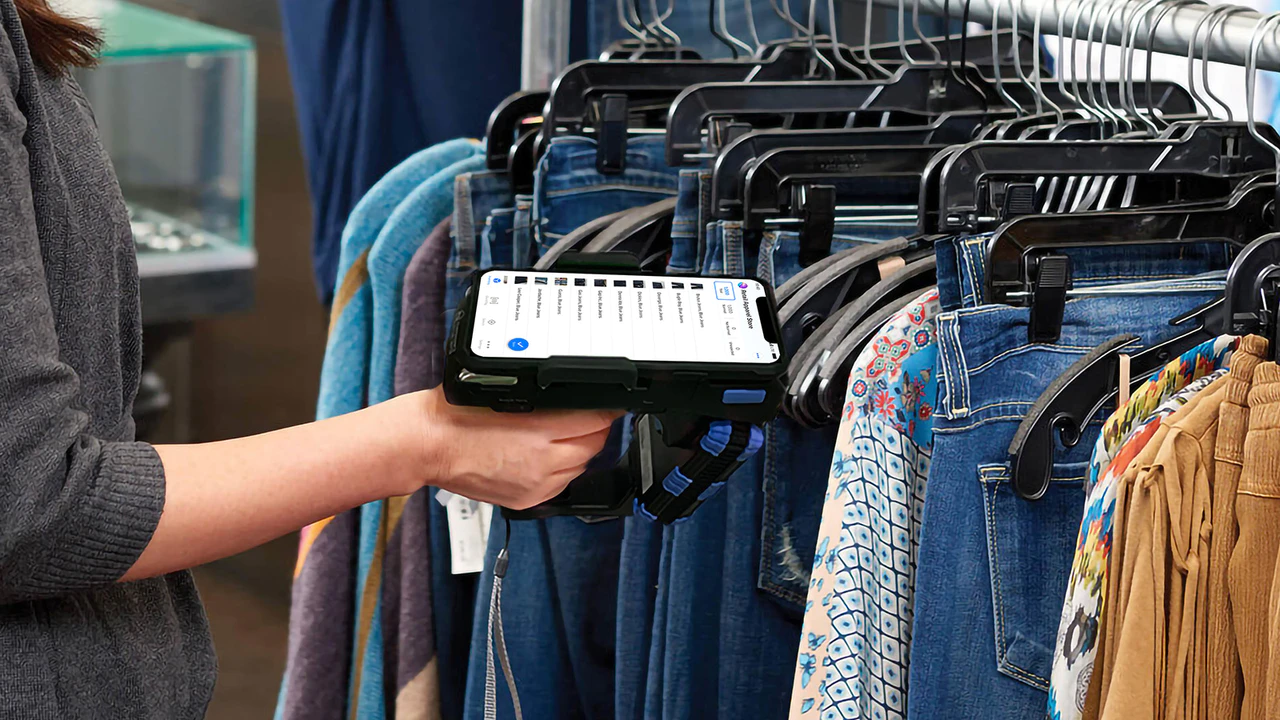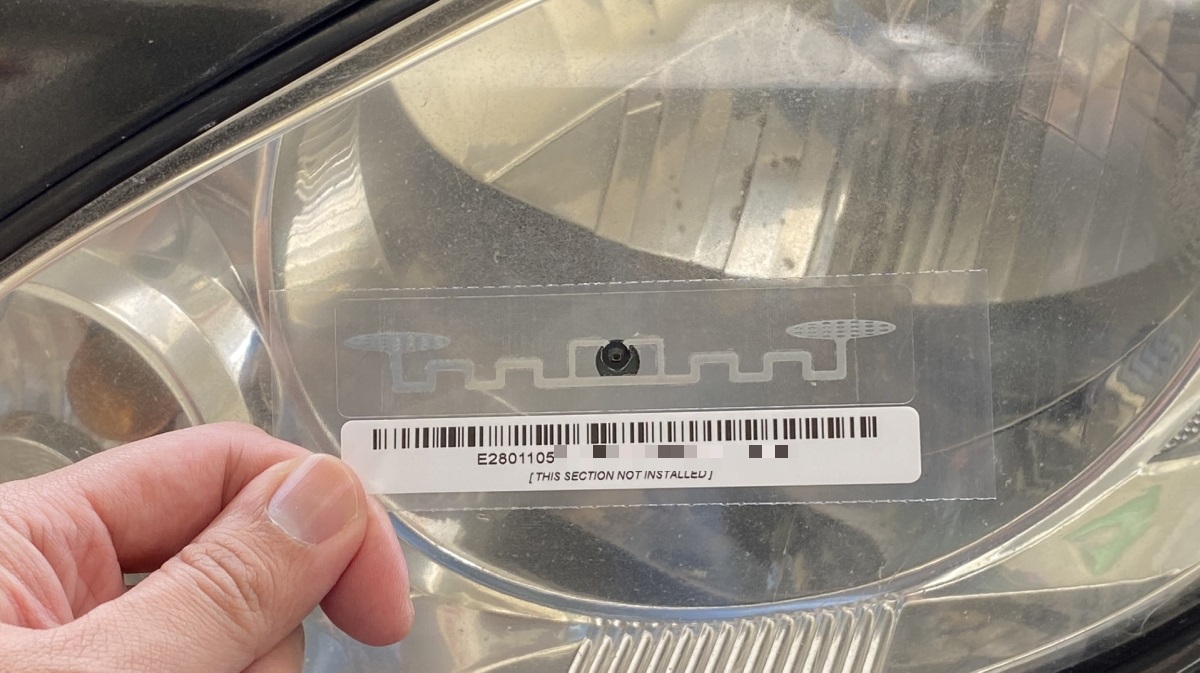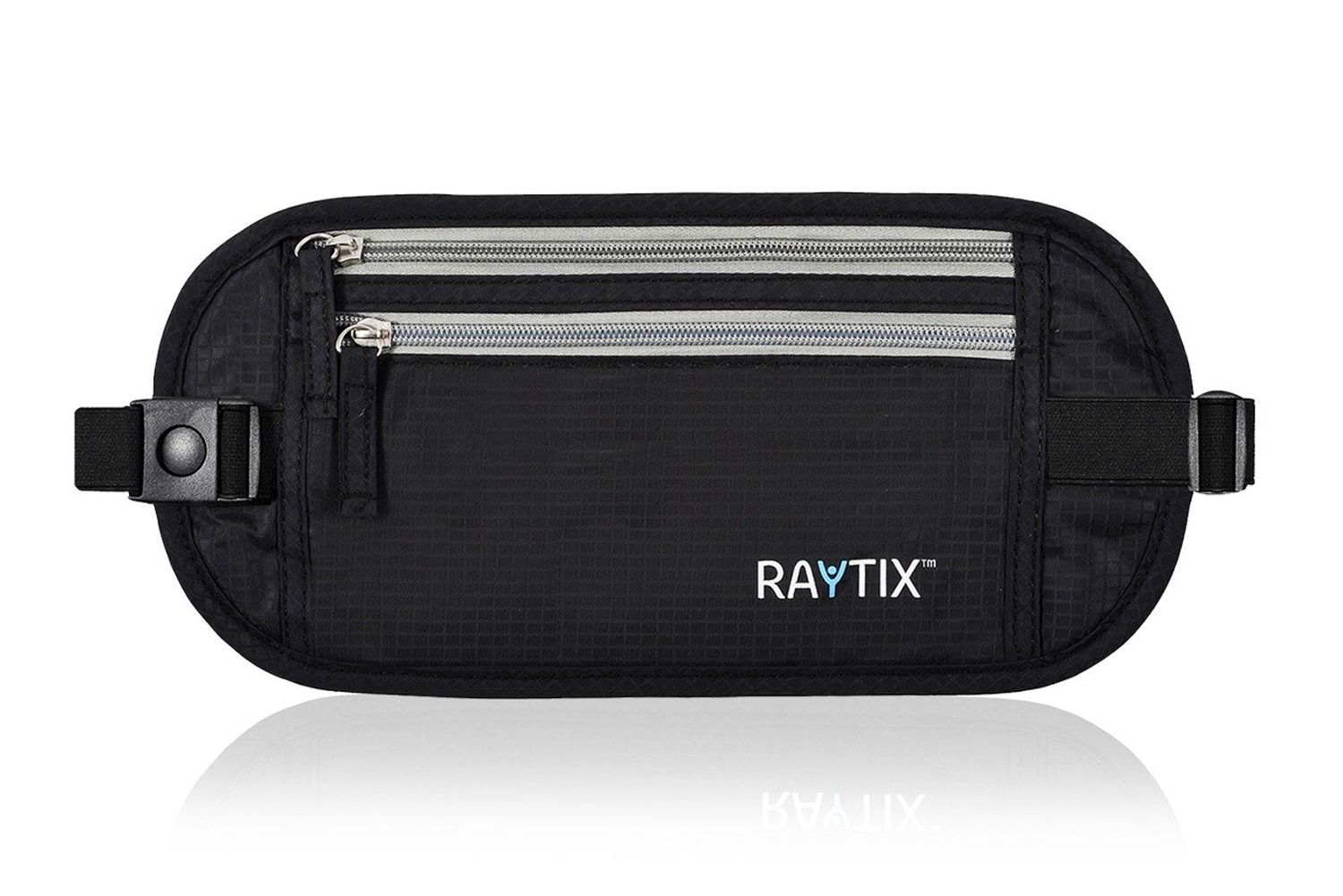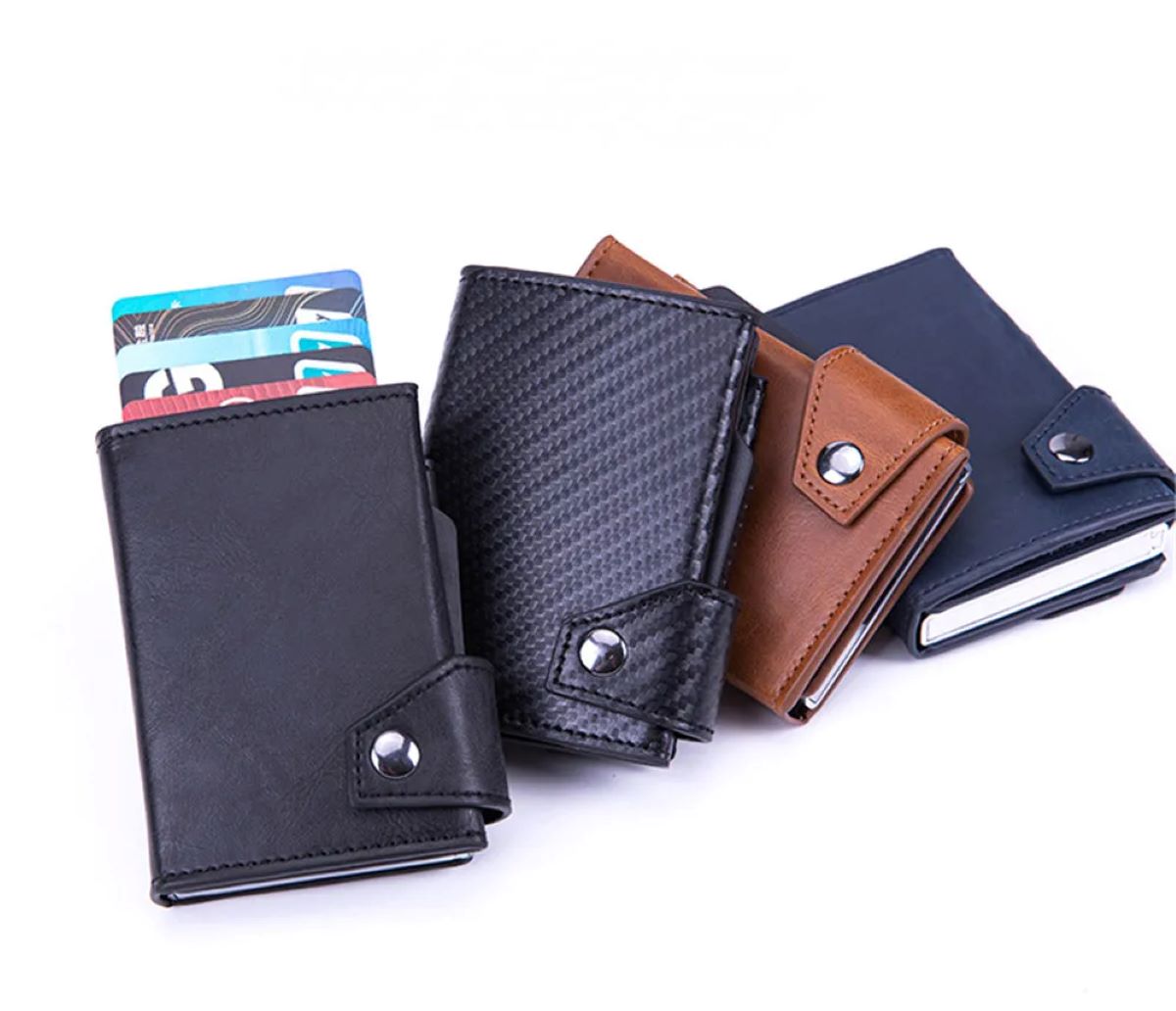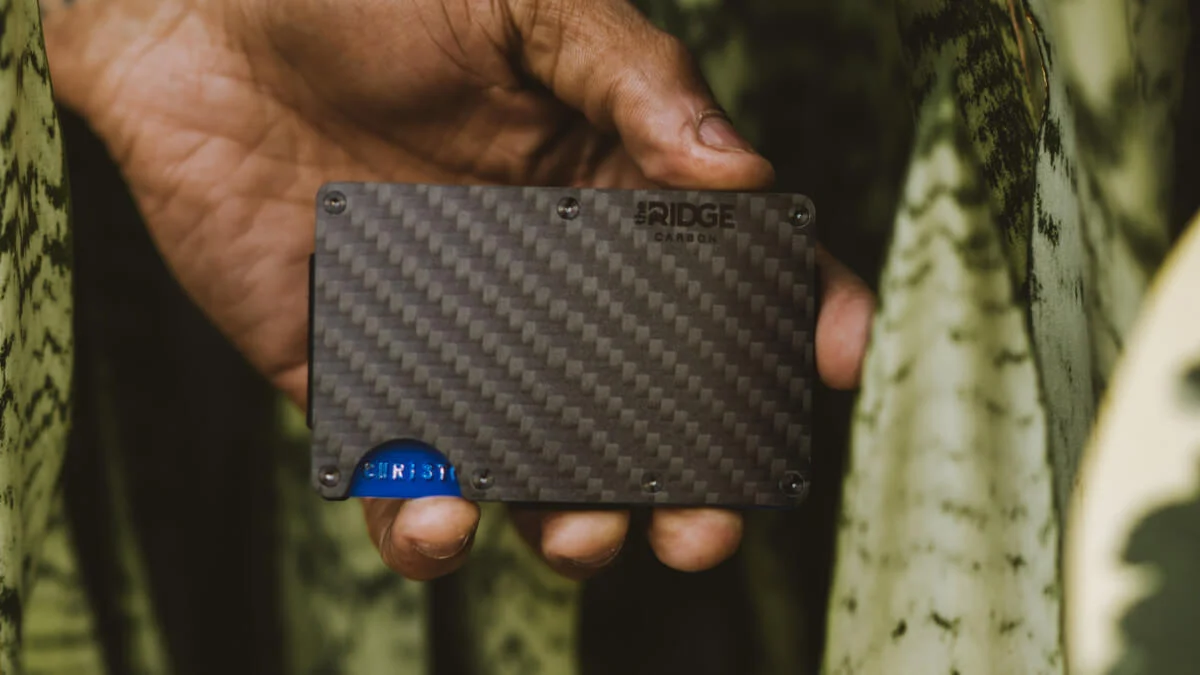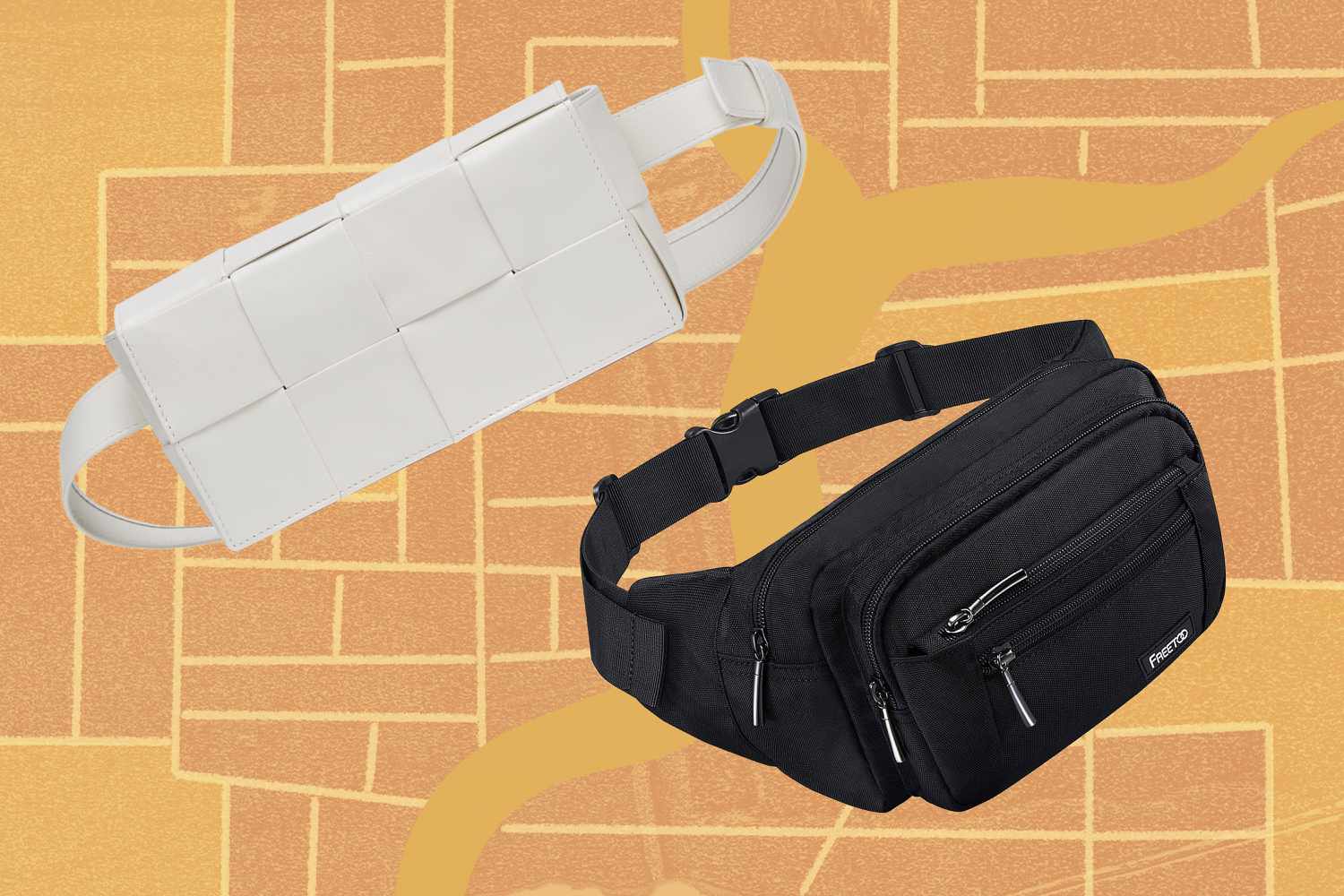Introduction
Welcome to the world of RFID on clothes, where technology meets fashion! Over the past few decades, Radio-Frequency Identification (RFID) has revolutionized various industries. From inventory management to contactless payments, RFID technology has found diverse applications. The use of RFID is not limited to just retail or logistics; it has now extended its reach into the realm of clothing.
RFID on clothes refers to the integration of RFID tags or chips into garments, allowing them to be tracked and identified remotely. This technology has paved the way for a wide range of applications, from enhancing the buying experience to improving inventory control and combating counterfeiting. With RFID, clothing retailers can streamline their operations and offer a more personalized and efficient shopping experience to their customers.
Imagine a scenario where you walk into a clothing store, and the garments on display instantly provide you with information about their price, fabric, and style, without having to check any labels or tags manually. With RFID on clothes, this scenario becomes a reality, where data is seamlessly transmitted from the embedded chips to the reader devices.
This article will explore the fascinating world of RFID on clothes, delving into its functionality, benefits, concerns, and practical usage. We will discuss how RFID works, its applications in the clothing industry, advantages for both retailers and consumers, as well as potential drawbacks and privacy concerns. By the end of this article, you will have a comprehensive understanding of RFID on clothes and its impact on the fashion industry.
What is RFID?
RFID, short for Radio-Frequency Identification, is a technology that uses radio waves to wirelessly transmit data between a tag or chip and a reader. It is a form of automatic identification and data capture (AIDC) technology that allows for quick and accurate identification of objects. RFID has gained popularity due to its ability to replace traditional barcode systems with a more efficient and automated tracking solution.
RFID consists of two main components: the RFID tag or chip and the RFID reader. The tag contains a microchip and an antenna, which enable it to store and transmit data. The reader uses radio waves to communicate with the tag and extract information. When the reader is in proximity to the tag, it sends out a signal that powers the tag and prompts it to transmit its stored data.
The RFID tag can be either passive or active. Passive tags rely on the energy emitted by the reader to power them up, while active tags have their own internal power source, such as a battery. Passive tags are more commonly used due to their lower cost and smaller size.
Each RFID tag has a unique identifier, commonly referred to as the Electronic Product Code (EPC), which distinguishes it from other tags. This allows for individual item tracking and enables retailers to manage inventory with precision. Additionally, RFID tags can store more data than traditional barcodes, making them versatile for various applications beyond simple identification.
RFID technology operates on different frequency bands, including low frequency (LF), high frequency (HF), and ultra-high frequency (UHF). Each frequency has its own advantages and is suitable for different use cases. For instance, LF RFID is commonly used for access control systems, HF RFID is often used for contactless payments, and UHF RFID is suitable for inventory management and supply chain applications.
In the next section, we will delve deeper into how RFID technology functions and the process of data transmission between RFID tags and readers.
How does RFID work?
RFID technology operates on the principle of wireless communication between a tag or chip and a reader. The process involves three main steps: tag identification, data transmission, and data processing. Let’s take a closer look at each of these steps:
- Tag identification: When an RFID reader comes into proximity with an RFID tag, it emits a radio frequency signal. This signal energizes the tag, providing it with the power it needs to operate. The energized tag then responds by sending back its unique identifier, known as the Electronic Product Code (EPC), to the reader.
- Data transmission: The RFID tag contains a microchip that stores data. Once the tag has been identified, it can transmit additional information stored in its memory, such as product details, manufacturing date, or even temperature readings. This data is sent back to the RFID reader using radio waves.
- Data processing: The RFID reader captures the transmitted data from the tag and processes it. The reader interprets the information and can perform various actions based on the data received. This may include updating inventory records, triggering alarms or alerts, or providing real-time information to the user.
RFID technology operates on different frequency bands, which determine the range and capabilities of the system. Low-frequency (LF) RFID typically operates at frequencies between 125 kHz and 134 kHz. It is commonly used for access control systems and animal tracking due to its short read range. High-frequency (HF) RFID operates at frequencies between 13.56 MHz and is often used for applications like contactless payments and item tracking. Ultra-high frequency (UHF) RFID operates at frequencies between 860 MHz and 960 MHz and has a longer read range, making it ideal for inventory management and supply chain applications.
RFID technology offers several benefits over traditional barcode systems. Since RFID tags do not require a direct line of sight to be read, items can be identified and tracked more efficiently and quickly. Multiple tags can be read simultaneously, allowing for faster inventory counts and reducing the need for manual scanning. Additionally, RFID tags are more durable and can withstand harsh conditions, making them suitable for various industries and environments.
Now that we understand how RFID technology works, let’s explore the wide range of applications it has in the world of clothing.
Applications of RFID on clothes
The integration of RFID technology into clothing has opened up a multitude of applications within the fashion industry. Let’s explore some key areas where RFID is being utilized:
- Inventory management: One of the primary applications of RFID on clothes is in inventory management. By attaching RFID tags to each garment, retailers can accurately track and monitor their inventory levels in real-time. This allows for efficient stock management, reducing the occurrence of out-of-stock situations and ensuring that popular items are always available for customers.
- Enhanced shopping experience: RFID technology can enhance the shopping experience for customers. By integrating RFID readers into clothing racks or shelves, customers can simply wave the items in front of the reader to obtain detailed information about the garment, such as price, available sizes, and color options. This provides a seamless and interactive shopping experience, enabling customers to make more informed purchasing decisions.
- Anti-theft and loss prevention: RFID tags can act as a deterrent to theft and aid in loss prevention. By tagging each garment with an RFID tag, retailers can set up exit sensors that trigger an alarm if an item is taken out of the store without being properly purchased. This not only reduces theft but also decreases losses due to misplaced or misplaced items within the store.
- Counterfeit detection: Counterfeit products have been a major concern in the fashion industry. RFID technology can play a crucial role in combating counterfeits by providing an additional layer of authentication. Each authentic garment can be embedded with a unique RFID tag that cannot be replicated, allowing retailers and consumers to verify the product’s authenticity easily.
- Product recalls: In the unfortunate event of a product recall, RFID technology can facilitate the process by quickly identifying and locating affected garments. By scanning the RFID tags, retailers can trace the entire supply chain and remove the recalled items efficiently, minimizing the impact on consumers and reducing potential harm.
These are just a few examples of how RFID technology is applied to clothing. The versatility and flexibility of RFID open up endless possibilities for the fashion industry, from improving operational efficiency and customer satisfaction to tackling key challenges like theft and counterfeiting.
In the next section, we will discuss the advantages of using RFID on clothes for both retailers and consumers.
Advantages of Using RFID on Clothes
The utilization of RFID technology on clothes offers numerous advantages for both retailers and consumers. Let’s examine some of the key benefits:
- Improved inventory management: RFID on clothes enables real-time inventory visibility, allowing retailers to efficiently track and manage their stock. With accurate and timely inventory data, retailers can optimize their supply chain, prevent stockouts, reduce overstocking, and streamline their operations. This leads to better inventory turnover rates and increased profitability.
- Enhanced customer experience: RFID technology transforms the shopping experience for customers. By incorporating RFID into garments, retailers can provide interactive displays that offer detailed information about products such as available sizes, colors, and pricing. This empowers customers with knowledge, ensuring they can make informed purchasing decisions and fostering a positive shopping experience.
- Efficient checkout process: RFID on clothes simplifies the checkout process by enabling contactless scanning of multiple items simultaneously. This reduces queue times and enhances customer satisfaction. Moreover, RFID tags eliminate the need for manual scanning, improving the overall speed and accuracy of the entire checkout process.
- Anti-theft and loss prevention: RFID tags act as a deterrent against theft and aid in loss prevention. By triggering alarms when items are removed without proper purchase, RFID technology helps reduce instances of theft and misplacement. This enhances security within retail environments, protects profit margins, and ensures a positive shopping experience for all customers.
- Supply chain visibility: RFID on clothes enables end-to-end visibility across the supply chain. From manufacturing to distribution and retail, each garment can be tracked, providing accurate and detailed information about its journey. This visibility enhances supply chain efficiency, reduces operational costs, and enables better quality control for retailers and manufacturers.
- Quick and accurate product recalls: In the event of a product recall, RFID technology simplifies the identification and removal of affected garments. With RFID tags, retailers can efficiently locate all recalled items, reducing the time and effort required for a recall campaign. This ensures consumer safety and minimizes the impact on brand reputation.
These advantages showcase the immense potential and value that RFID technology brings to the fashion industry. By leveraging RFID on clothes, retailers can optimize their operations, deliver exceptional customer experiences, mitigate risks, and stay ahead of the competition.
In the next section, we will explore the potential drawbacks and concerns associated with the use of RFID on clothes.
Disadvantages and Concerns of Using RFID on Clothes
While RFID technology offers numerous benefits in the context of clothing, there are also some disadvantages and concerns that need to be addressed. Let’s explore them:
- Privacy concerns: One of the primary concerns surrounding RFID on clothes is privacy. RFID tags can potentially store sensitive personal information, such as purchase history or customer preferences. There is a need for robust data protection measures to ensure that this information is not misused or compromised.
- Security vulnerabilities: RFID signals can be intercepted or cloned, making them susceptible to security breaches and counterfeit attacks. Hackers may exploit these vulnerabilities to gain unauthorized access to personal information or tamper with the integrity of the system. It is crucial to implement strong encryption protocols and security measures to safeguard against such threats.
- Cost implications: Implementing RFID technology on clothes can involve significant upfront costs for retailers. This includes the expense of purchasing RFID tags, readers, and the necessary infrastructure for deployment. For smaller retailers, the initial investment may be prohibitive and require careful consideration of the return on investment.
- Technology limitations: RFID technology has certain limitations that need to be considered. For instance, the read range of RFID tags may be constrained, requiring close proximity to the reader for successful identification. Moreover, tags can be affected by environmental factors like moisture or metal interference, impacting their performance and reliability.
- Resistance from consumers: Some consumers may feel uncomfortable with the idea of their clothes being embedded with RFID tags. Concerns about privacy invasion or tracking may deter them from purchasing RFID-enabled garments. Educating consumers about the benefits and security measures surrounding RFID can help alleviate these concerns.
- Environmental impact: The disposal of RFID tags can potentially contribute to electronic waste. As the adoption of RFID on clothes increases, it is important to consider environmentally sustainable practices for the management and recycling of RFID components to minimize the impact on the environment.
Addressing these disadvantages and concerns is crucial to ensure the responsible and ethical use of RFID on clothes. By implementing strong security measures, safeguarding privacy, and engaging in transparent communication with consumers, the fashion industry can overcome these challenges and create a safer and more sustainable RFID ecosystem.
In the next section, we will discuss how to utilize RFID technology effectively on clothes.
How to Use RFID on Clothes
To effectively utilize RFID technology on clothes, several steps should be followed. Let’s explore the process:
- Tagging garments: The first step is to attach RFID tags to each garment. These tags can be sewn into the clothing or embedded within labels or hangtags. It is essential to ensure that the tags are securely attached to prevent them from detaching during use.
- Assigning unique identifiers: Each RFID tag should be assigned a unique identifier, such as an Electronic Product Code (EPC). This identifier allows for the individual tracking and identification of each garment. It is crucial to maintain an accurate database that associates the EPCs with specific product details, sizes, and other relevant information.
- Deploying RFID readers: RFID readers need to be strategically placed within retail stores, distribution centers, or factories to capture data from the RFID tags. The number and positioning of readers are determined based on the specific application and the desired read range. It is important to conduct tests and optimize reader placement to ensure optimal performance and coverage.
- Integrating with existing systems: RFID technology should be seamlessly integrated into existing systems, such as inventory management or point-of-sale systems. This integration enables data synchronization and provides a complete view of stock levels, sales, and other crucial metrics. By integrating RFID data with other systems, retailers can enhance operational efficiency and gain meaningful insights into their business processes.
- Training and education: Proper training and education are essential for employees who will be interacting with RFID technology. They should be familiar with the functionality of RFID tags, reader operations, and troubleshooting techniques. Educating employees about the benefits of RFID, data privacy, and security protocols is crucial to ensure successful implementation and minimize any resistance to the technology from the staff.
- Maintenance and monitoring: Regular maintenance and monitoring of the RFID system are critical to ensure optimal performance. This includes checking the functionality of RFID tags, inspecting readers for any potential issues, and updating software or firmware as needed. Ongoing monitoring allows retailers to identify and address any performance gaps or security concerns promptly.
By following these steps, retailers can effectively utilize RFID technology on clothes to streamline operations, improve inventory management, and enhance the overall customer experience.
Now that we have explored the process of using RFID on clothes, let’s wrap up our discussion in the final section.
Conclusion
RFID technology has greatly transformed the fashion industry, bringing numerous benefits and opportunities. With RFID on clothes, retailers can enhance their inventory management processes, provide an immersive shopping experience, and mitigate security risks such as theft and counterfeiting. Through the use of RFID tags and readers, garments can be easily tracked, providing real-time visibility for retailers and improving operational efficiency.
While there are advantages to utilizing RFID on clothes, there are also some concerns that need to be addressed. Privacy, security, cost implications, and consumer resistance are among the challenges that need careful consideration. Implementing strong security measures, respecting privacy rights, and fostering open communication with consumers are essential steps to address such concerns and build trust in RFID technology.
To effectively use RFID on clothes, proper tagging, accurate data management, strategic reader placement, and system integration are key considerations. Training employees and ensuring ongoing maintenance and monitoring of the RFID system are crucial for long-term success. By following these steps, retailers can leverage RFID technology to optimize their operations, improve customer satisfaction, and stay ahead in a competitive market.
As technology continues to evolve, we can expect further advancements in RFID that will revolutionize the fashion industry. From smart fitting rooms to personalized recommendations based on RFID data, the possibilities are endless. It is important for retailers to stay up-to-date with emerging trends and innovations to leverage RFID technology effectively and remain at the forefront of the ever-changing fashion landscape.
In conclusion, RFID on clothes offers significant potential for improving efficiency, enhancing the shopping experience, and combating challenges in the fashion industry. While there are considerations to address, the benefits of RFID technology make it a valuable tool for retailers in the modern era. By embracing RFID technology responsibly and creatively, the fashion industry can unlock new opportunities and deliver a seamless and personalized experience to consumers.







